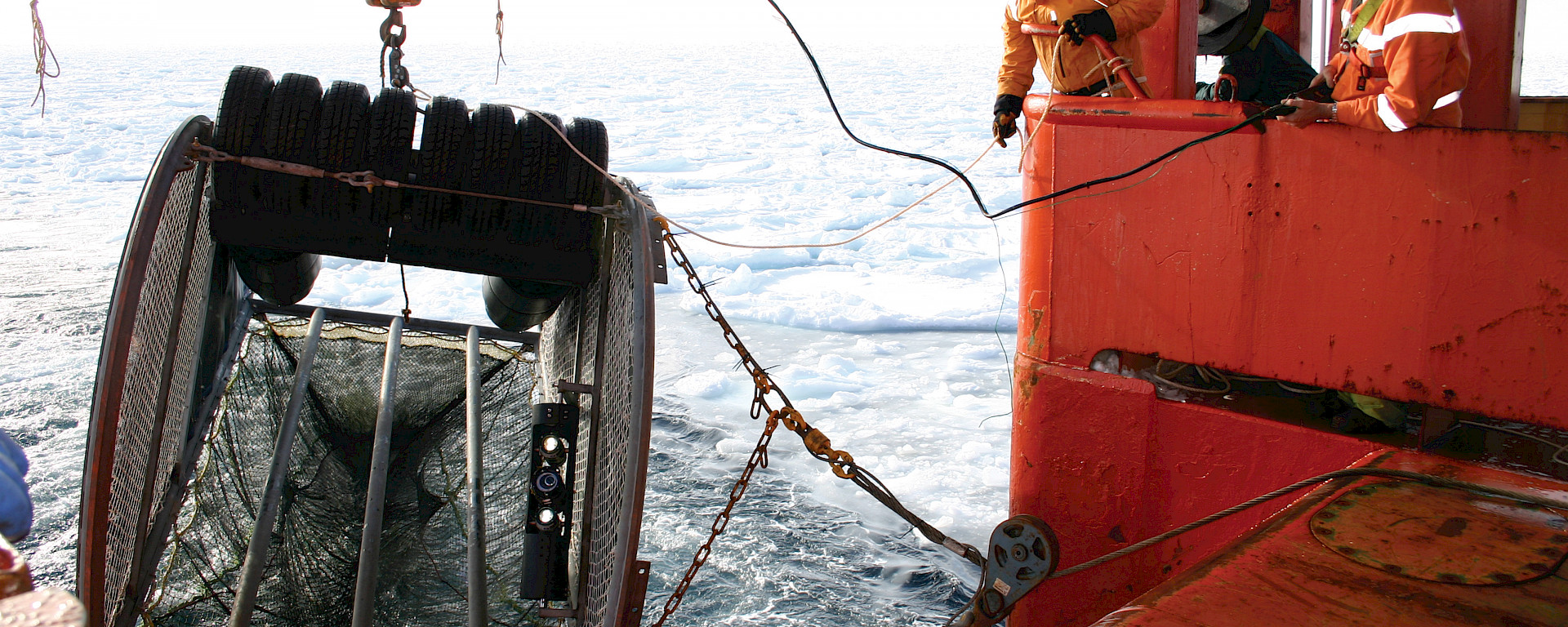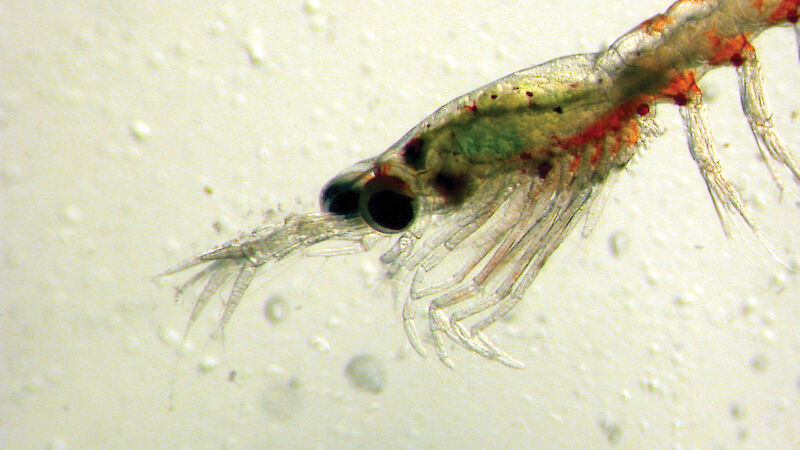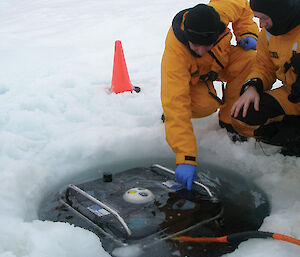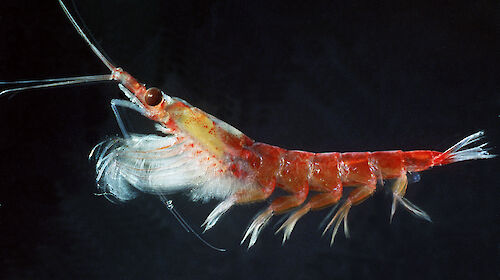The annual formation and retreat of sea ice around Antarctica is one of the largest physical changes on Earth. Besides its substantial impact on both regional and global climate, the ice cover plays a pivotal role in the biogeochemical cycles of the Southern Ocean and is an important structural element of Antarctic marine ecosystems. Forming a centimetre- to metre-thick skin on the ocean’s surface, sea ice provides a platform for marine birds and mammals and a substrate for microalgae. It is also a habitat for Antarctic krill – a key species in the Southern Ocean food chain – that feed on ice algae during winter and spring, when food in the water column is scarce.
The importance of sea ice for marine ecological and biogeochemical processes is still poorly understood and information on the physical, chemical and biological properties of sea ice during winter and early spring is scarce. Classical ice sampling methods – often based on ice corers with small diameters – provide insufficient data to understand large-scale processes. New methods and technologies are needed to answer two important and pressing questions: how does the winter sea-ice extent affect biological productivity off East Antarctica and; how sensitive are krill populations to potential future changes in sea ice extent?
During the Sea Ice Physics and Ecosystem eXperiment (SIPEX) we used newly developed sampling and observing systems and technologies to address these questions. These included an instrumented Remotely Operated Vehicle (ROV) equipped with a sonar, light sensors and camera system, to observe and film krill under sea ice, and a custom-built Surface and Under Ice Trawl (SUIT) and Rectangular Midwater Trawl to collect animals for physiological experiments.
The ROV was piloted from a control stand within a laboratory container on board the Aurora Australis, while a small crew operated its 350 m-long tether at a drill-hole out on the ice floe. Using online sonar data, the ROV could be 'flown' at a known distance to the subsurface of the ice, and while video observations were performed, measurements of the under-ice light field were taken. These optical measurements are used to estimate the algal biomass within the sea ice. The method allows the quantification of ice algal biomass along transects and is approximately 20 times faster than classical ice coring methods, saving valuable ship time.
The SUIT – developed by the Dutch research team of Dr. Jan van Franeker at Wageningen Institute for Marine Resources and Ecosystem Studies – floats directly under the ice and catches krill that are feeding at the subsurface of the ice floes. The deployment of this truck-sized trawl requires the coordination of ship officers on the bridge, winch operators, and gear officers and crew on the trawl deck. After demanding trials both in open water and thin ice, the trawl was successfully used in the inner pack, allowing us to catch krill from directly under the ice. Captured krill were then assessed for their feeding conditions. Experiments on krill growth rates and their demographic measurements were also conducted.
We found that adult krill were just about to start boosting their maturity in preparation for summer reproduction, by utilising ice algae under ice floes as a food source, as well as phytoplankton blooms in areas where the ice had started to retreat. During the voyage krill larvae were also found to be on the verge of accelerating their growth rates, in preparation for summer.
Undoubtedly, the amount and timing of algae associated with sea ice, and in open water at retreating ice edges, are very important determinants for krill population dynamics. Preliminary analysis of the data suggests that SIPEX was carried out at the very moment when biological activities were taking off in our survey area off East Antarctica. New methods were successfully deployed and tested and will allow time- and cost-effective sampling and monitoring of the sea ice habitat in the future.
The collected information on the physical, chemical and biological parameters of sea ice, in combination with our work on krill, will allow us to relate the performance of krill with various sea ice conditions and habitats during spring, and to help forecast what might happen to krill populations given possible future changes in sea ice extent.
Klaus Meiners1 and So Kawaguchi2
1Antarctic Marine Ecosystems program, ACE CRC
2Southern Ocean Ecosystems program, AAD





